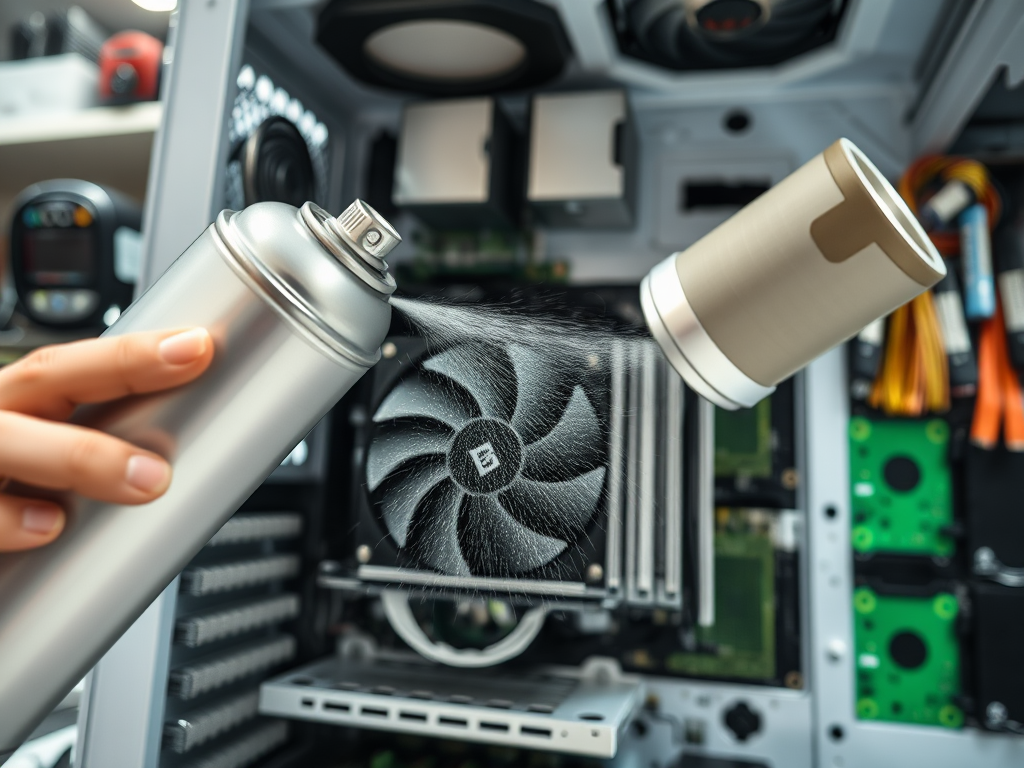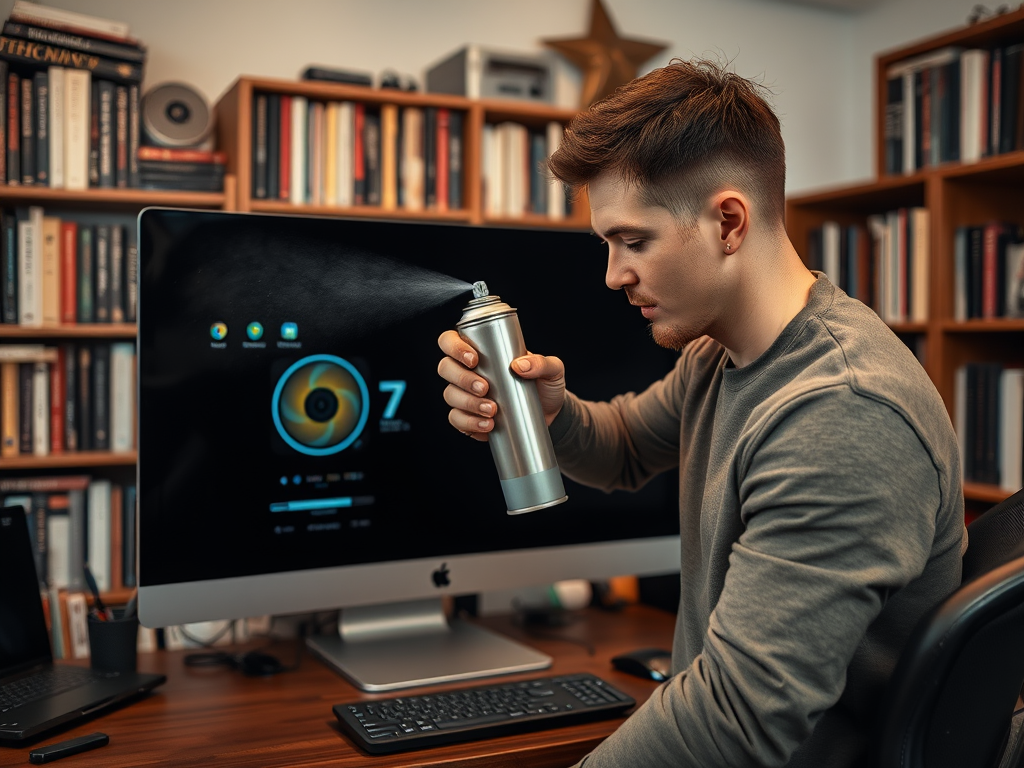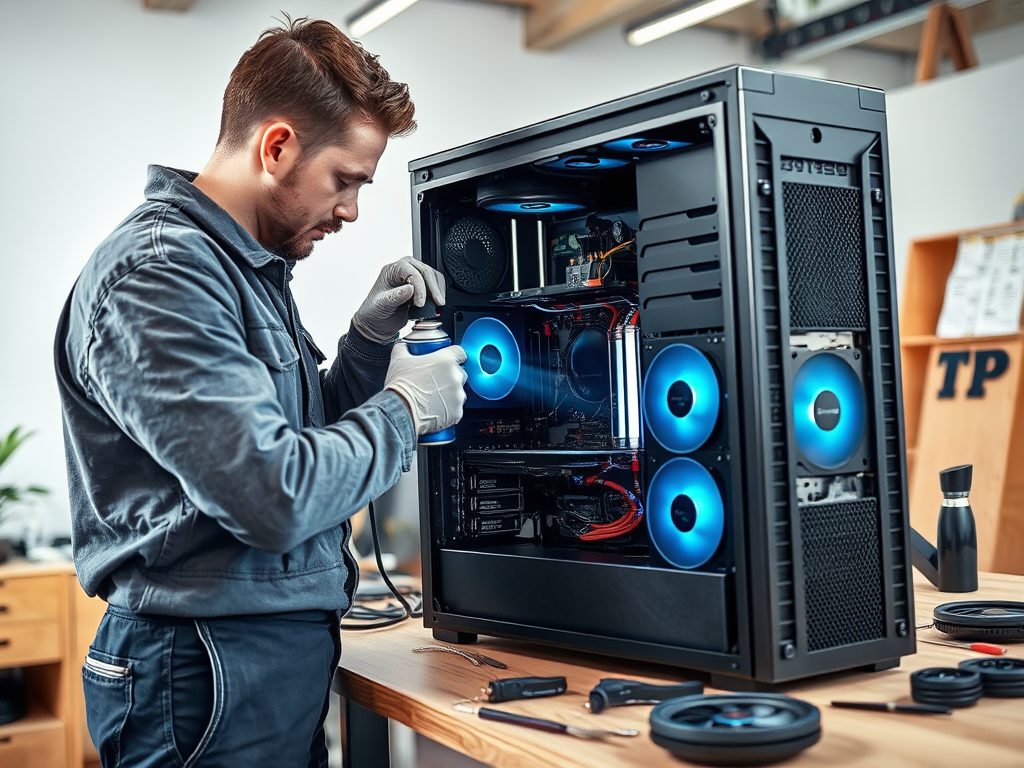Cleaning your PC is not just about aesthetics; it is a vital upkeep procedure that ensures your device runs smoothly and efficiently. Dust and grime can build up over time, leading to overheating and potential hardware failures. One of the most effective and popular tools for this task is compressed air. This simple yet powerful tool enables you to tackle those hard-to-reach places, eliminating debris that a cloth or brush alone might not effectively manage. Furthermore, using compressed air properly can prolong the life of your computer components and enhance their performance significantly. In this guide, we will unravel the best practices for employing compressed air in your PC cleaning routine.
Regular cleaning maintains not only the performance of your hardware but also contributes positively to your overall computing experience. When cooling systems become blocked by dust, the computer struggles to maintain optimal internal temperatures. High operating temperatures can lead to thermal throttling, where the machine reduces its speed to cool down, affecting your productivity. Therefore, understanding how and when to clean your PC is crucial. In this article, you will learn about proper cleaning techniques, necessary precautions, and tips for making your PC as dust-free as possible.
Understanding the Importance of Regular Cleaning

Accumulating dust, hair, and debris can lead to serious consequences within your PC. Furthermore, components like the CPU and GPU are particularly susceptible to damage from overheating. If ignored, you might end up in a situation where your device’s lifespan is significantly shortened. Here, we highlight the critical benefits of keeping your PC clean:
- Enhanced airflow leads to better cooling.
- Reduction of potential hardware failures.
- Improved overall performance of the system.
- Prevention of dust-related noise from fans and components.
- Prolongs the lifespan of your hardware.
Choosing the Right Compressed Air Product

When selecting compressed air for cleaning your PC, you have to be discerning in your choice. Not all products are created equal. The selections range from various cans of air designed specifically for electronics to household products that may not be as safe. Here are some tips for choosing the right can of compressed air:
- Type of Compressed Air: Look for cans labeled “safe for electronics.”
- Nozzle Design: A long and thin nozzle can help reach tight spaces.
- Environmentally-Friendly Options: Some brands offer eco-friendly compressed air that is less harmful to the environment.
Best Practices for Using Compressed Air
The key to effectively using compressed air lies in the details of your technique. Following the correct steps will not only keep your equipment safe but also significantly enhance its cleaning efficiency. Here are the essential steps to consider:
- Power Down and Unplug the PC: Always ensure the power is off before commencing your cleaning, as this avoids electrical hazards.
- Open the PC Case Carefully: Refer to your computer’s manual for safe opening procedures.
- Hold the Can Upright: This prevents moisture from escaping, which could damage the internal components.
| Component | Frequency of Cleaning | Best Cleaning Method |
|---|---|---|
| Fans | Every 3 months | Compressed Air |
| Graphics Card | Every 6 months | Compressed Air |
| Power Supply | Every 6 months | Compressed Air + Brush |
Techniques for Effective Cleaning
When using compressed air, certain techniques can increase effectiveness and safety. These methods include:
- Blow Dust Out: Start with components that attract the most dust, such as fans and heat sinks. Use short bursts to avoid excessive spinning of the fans.
- Target Specific Areas: Focus on the CPU cooler, graphics card, and any tight ports.
- Work in a Well-Ventilated Area: This helps dissipate dust particles effectively.
Precautions to Take When Using Compressed Air
While compressed air is usually safe to use, there are still some precautions to consider. Following these guidelines can help protect your hardware:
- Avoid Prolonged Air Blasts: Limit the duration of air blasts to minimize the risk of static electricity.
- Use a Brush for Stubborn Dust: For those tricky areas, a soft anti-static brush can be a helpful addition.
- Do Not Shake the Can: Shaking the can may lead to moisture escaping, which can harm your components.
Conclusion
Cleaning your PC with compressed air is an essential practice that enhances performance and prolongs component longevity. By following the techniques and precautions outlined in this guide, you can maintain a dust-free environment inside your computer. Regular maintenance not only keeps your system running optimally but also minimizes the risk of overheating and hardware failures. Embracing these methods will yield a cleaner device, improving your overall computing experience and ensuring that it stays in peak condition for years to come. Now that you’re equipped with this knowledge, it’s time to make a habit of cleaning your PC regularly!
Frequently Asked Questions
- Is it safe to use compressed air to clean my PC? Yes, it is safe as long as you follow the recommended practices and hold the can upright.
- How often should I clean my PC? It is advisable to clean your PC every 3 to 6 months, depending on your environment.
- Can I use a vacuum cleaner instead of compressed air? It is not recommended because vacuum cleaners can create static electricity that may damage your components.
- What should I do if the dust is stubborn and won’t come off? Use a soft brush to gently dislodge stubborn dust before using compressed air again.
- Are there any alternatives to compressed air? Yes, consider using an electric air duster or an anti-static brush.





